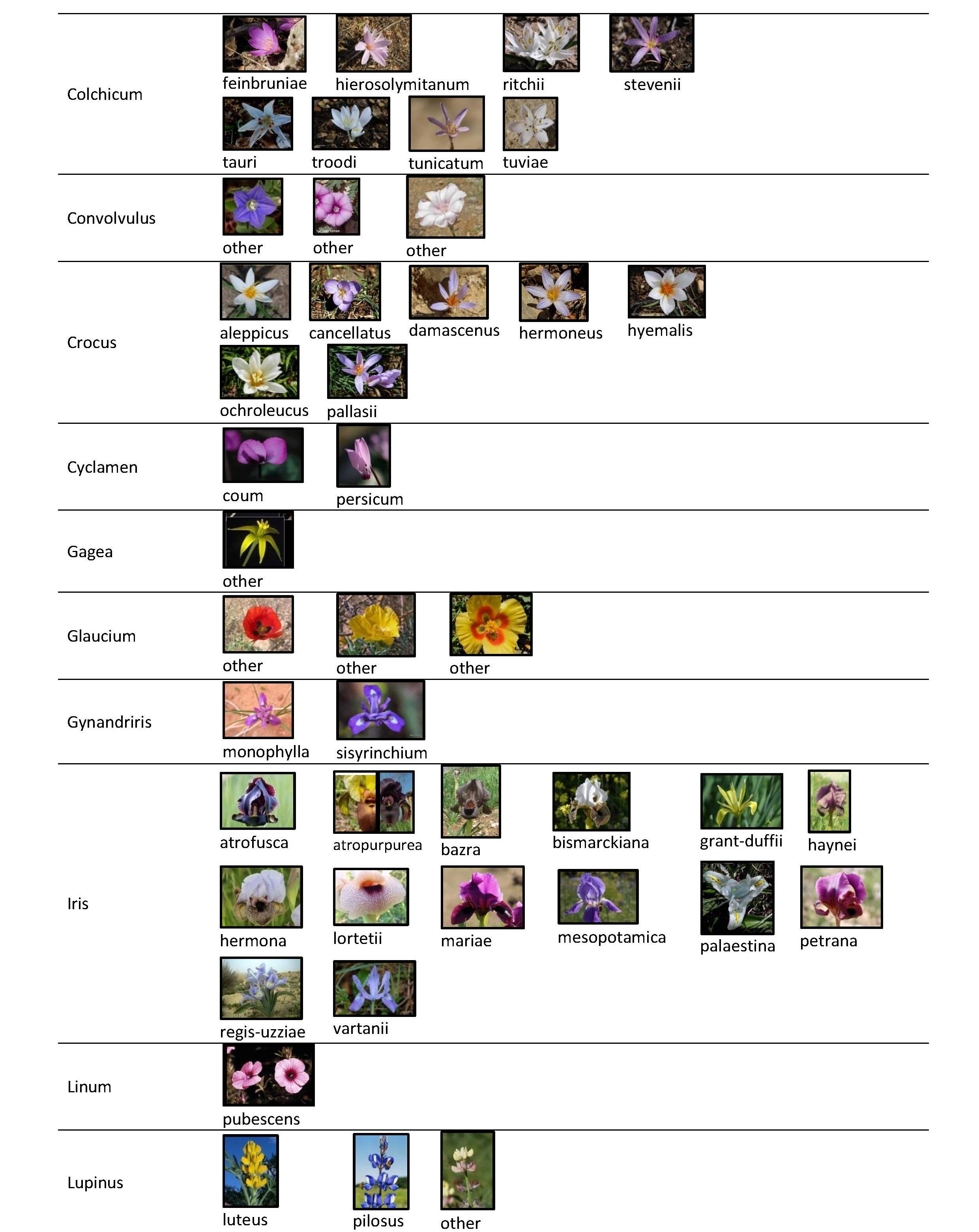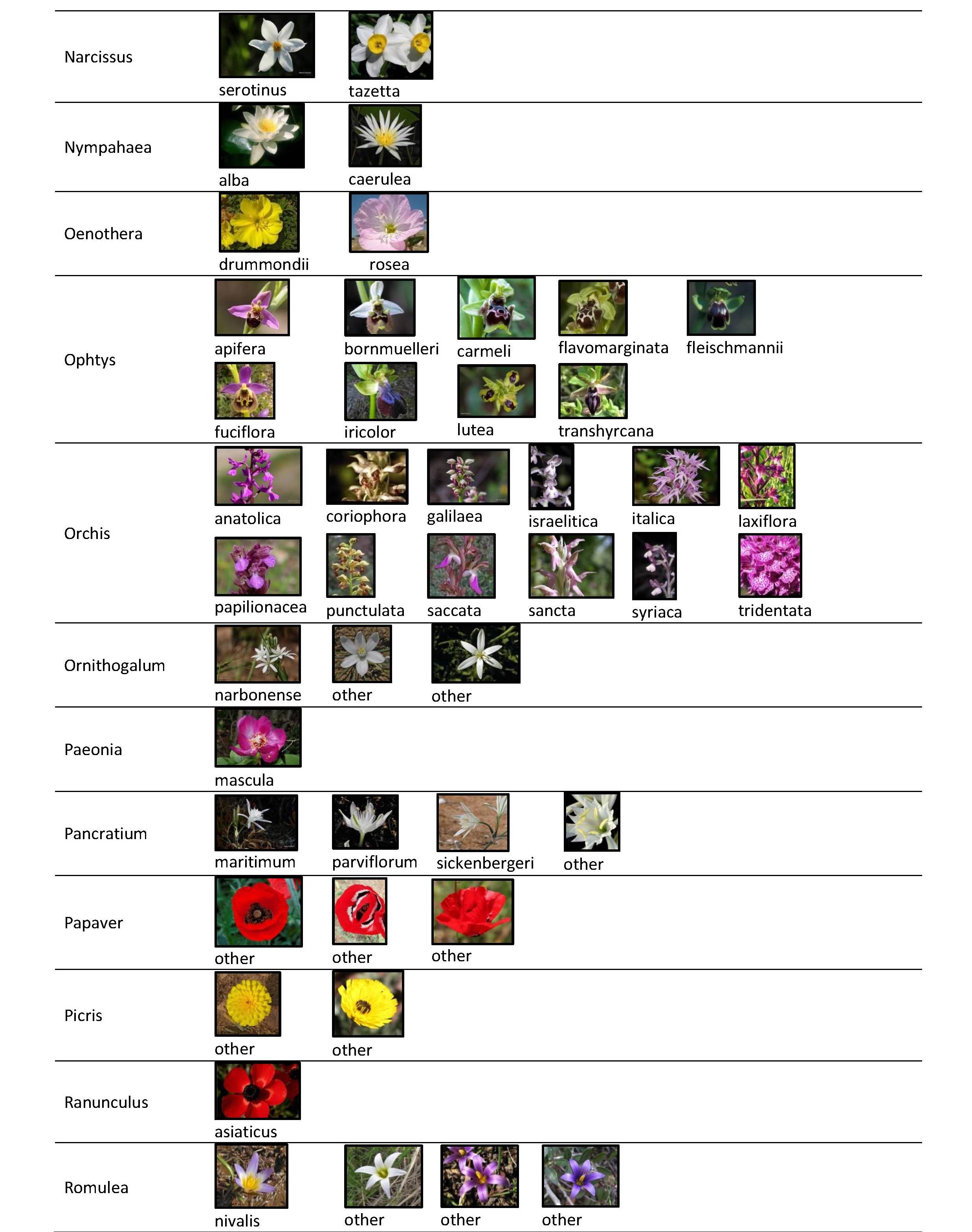
Ravid Cohen Prof Daphna Weinshall Prof Avi Shmida
Models for fine-grained flower classification tasks, in particular models that use features from a pre-trained Convolutional Neural Network for image representation, show outstanding results, with more than 95% mean class accuracy on the Oxford Flower Database [4,6,7]. It would seem that these emerging tools may be able to address the more realistic and challenging problems posed by the varying appearance of flowers in the wild, including super-fine-grained classification tasks. In accordance, we collected a new and even more fine-grained database of Israeli wild flowers with varying levels of similarity between categories. We then followed the classification paradigm described in Razavian et al [1] to classify both the Oxford 102 flower database and the new one. Using a representation based on the deep learning network described in [2], our classification results on the Oxford dataset are excellent with 94.9% mean class accuracy. When training the same classifier with our database it achieved only 79.3%, an evidence for the higher challenge the Israel Flower Database poses. Our new database is also unique in being hierarchical (genus and species), while being labeled with accurate scientific botanical names.
The new database is hierarchical, consisting of 3,439 images from 39 genera and about 115 species of common wild flowers in Israel, photographed in their natural habitat. Figure 1 shows one example from each species. For the purpose of this project we defined two recognition tasks Israel 43 (genus-specific) and Israel 64 (species-specific), consisting of 43 and 64 categories respectively. Most of the images were collected from donor photographers or from the web. A few hundred images were acquired by our own means. The database is still being developed, as for many of the species we do not have enough images, so any donation of new images will be appreciated. About half of the images are available for download in the download section below, while the other half can be requested by e-mail for research purposes only.
For further questions: ravid.cohen@mail.huji.ac.il
Table 1 summarizes the best results of our model on the 3 flower databases: Oxford 102, Israel 43 and Israel 64. For more results and information regarding the databases and methods please refer to the project report in the download section.
| Database | Top-1 | Top-5 |
| Oxford 102 | 93.8 | 98.5 |
| Israel 43 | 92.6 | 98.3 |
| Israel 64 | 79.3 | 95.3 |



